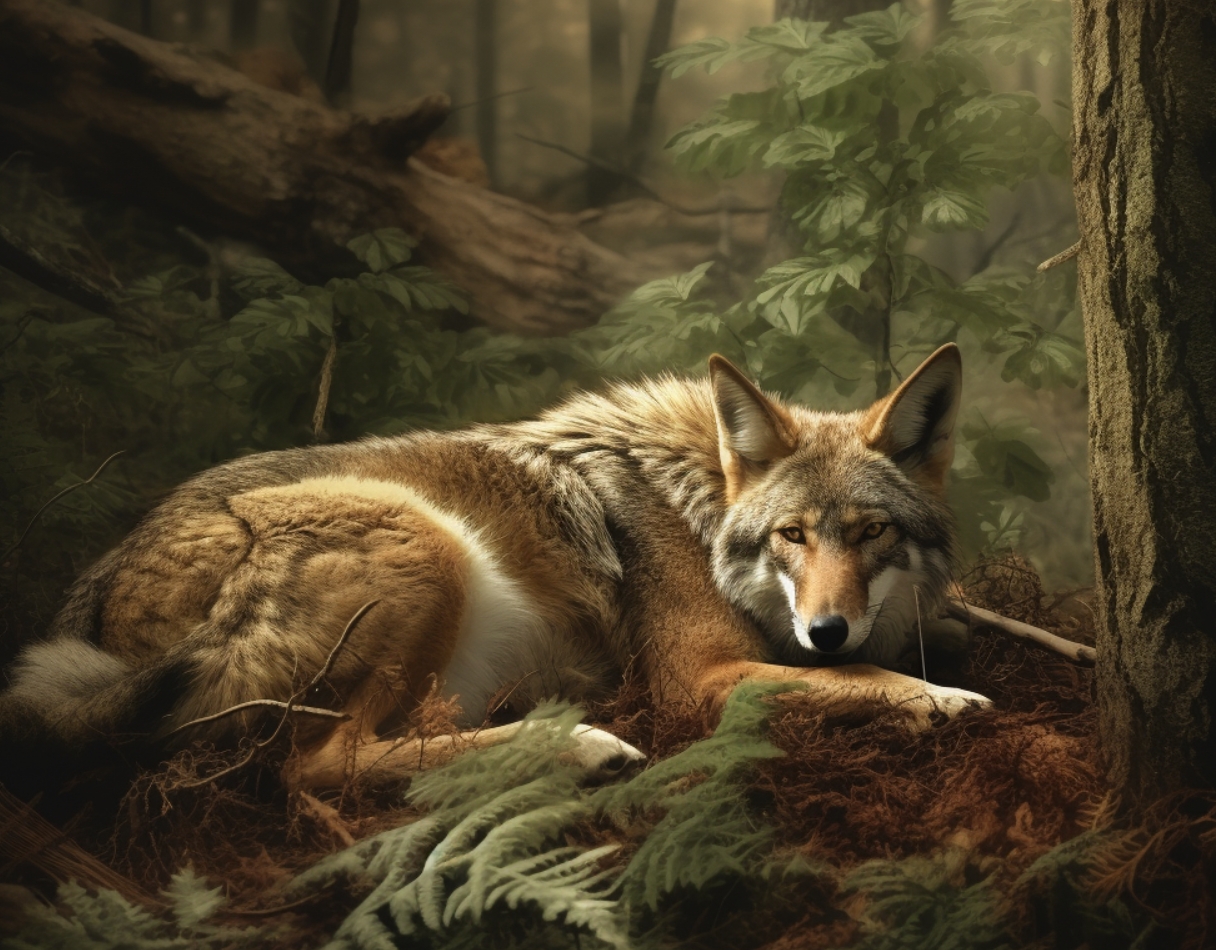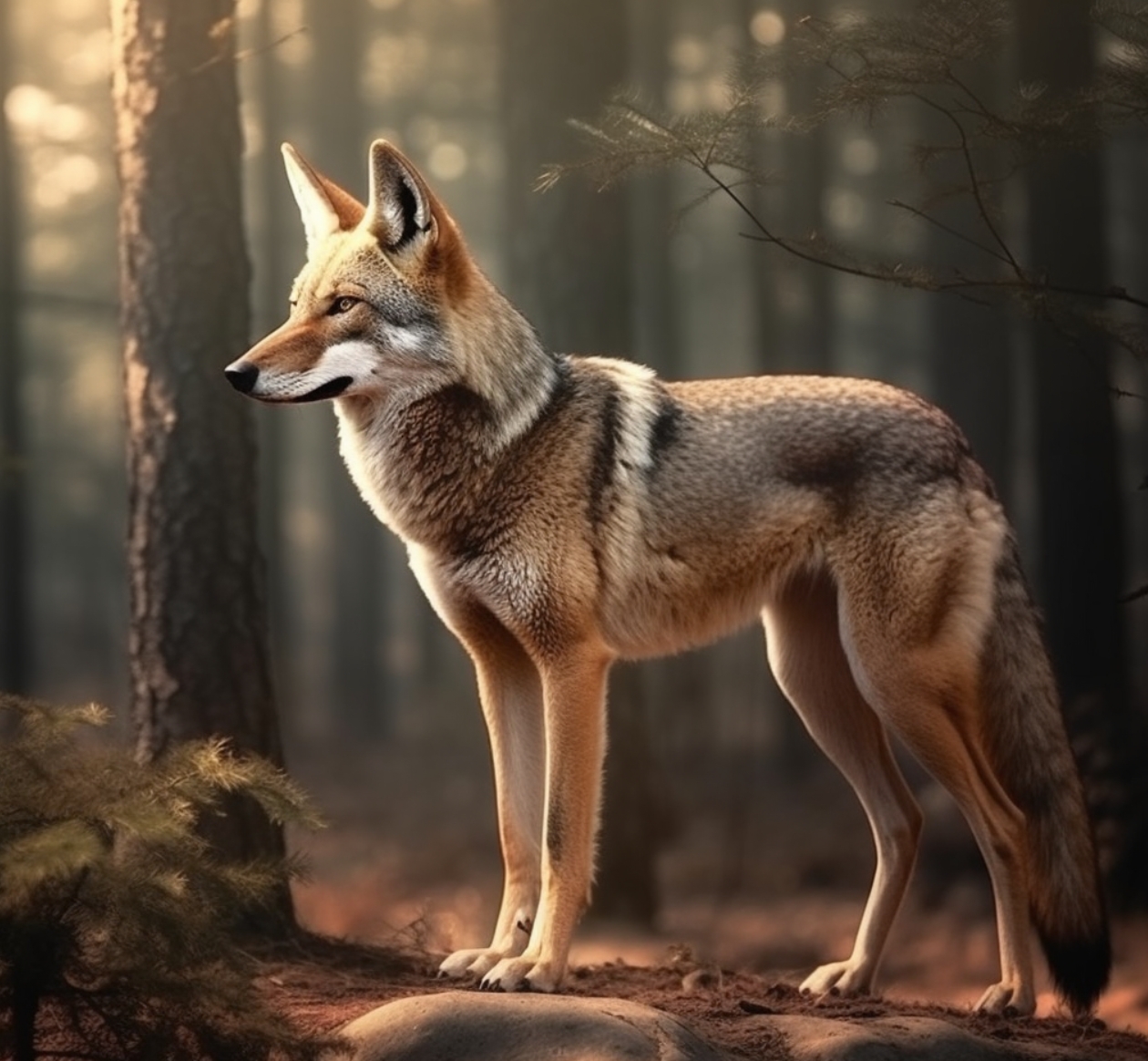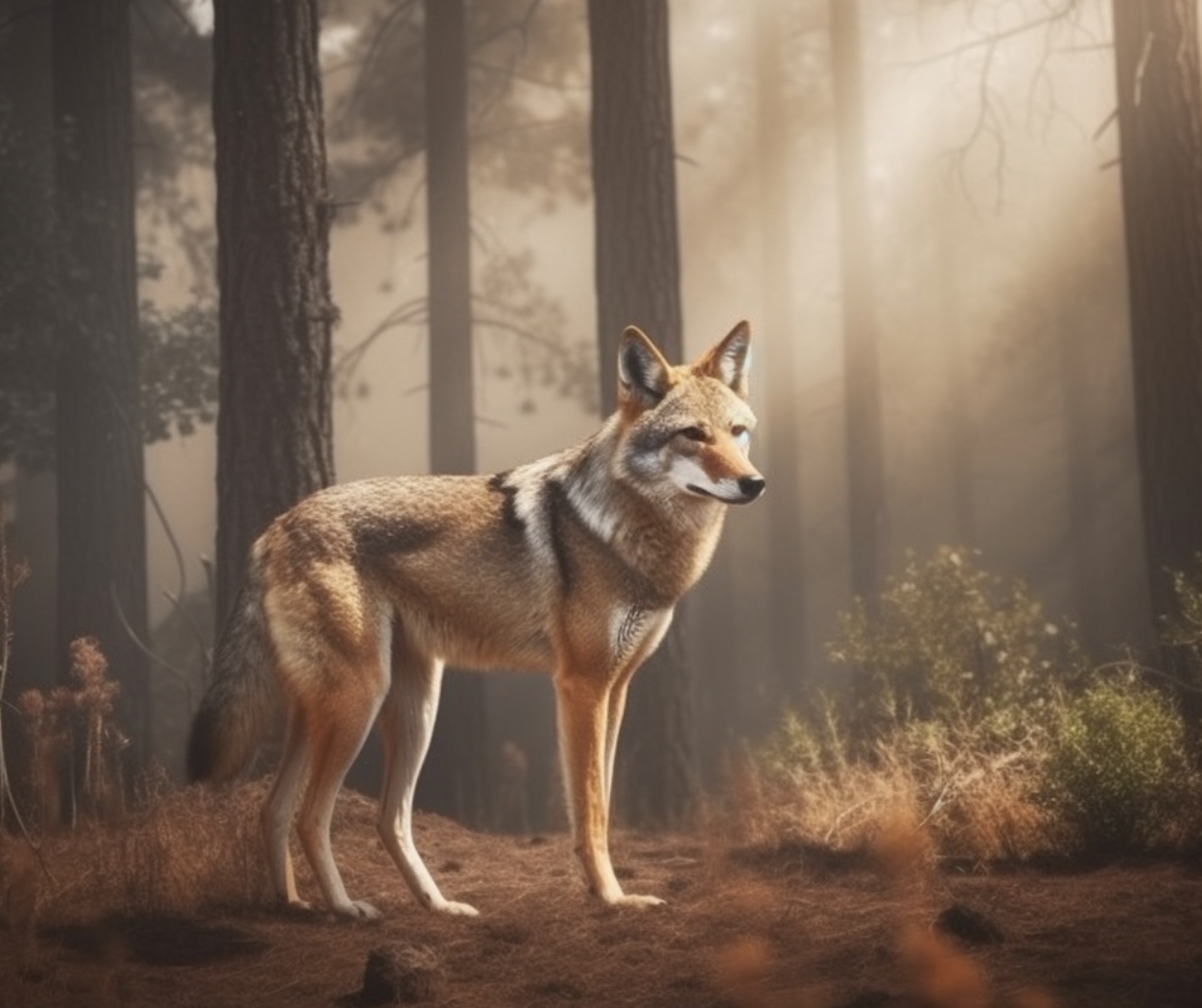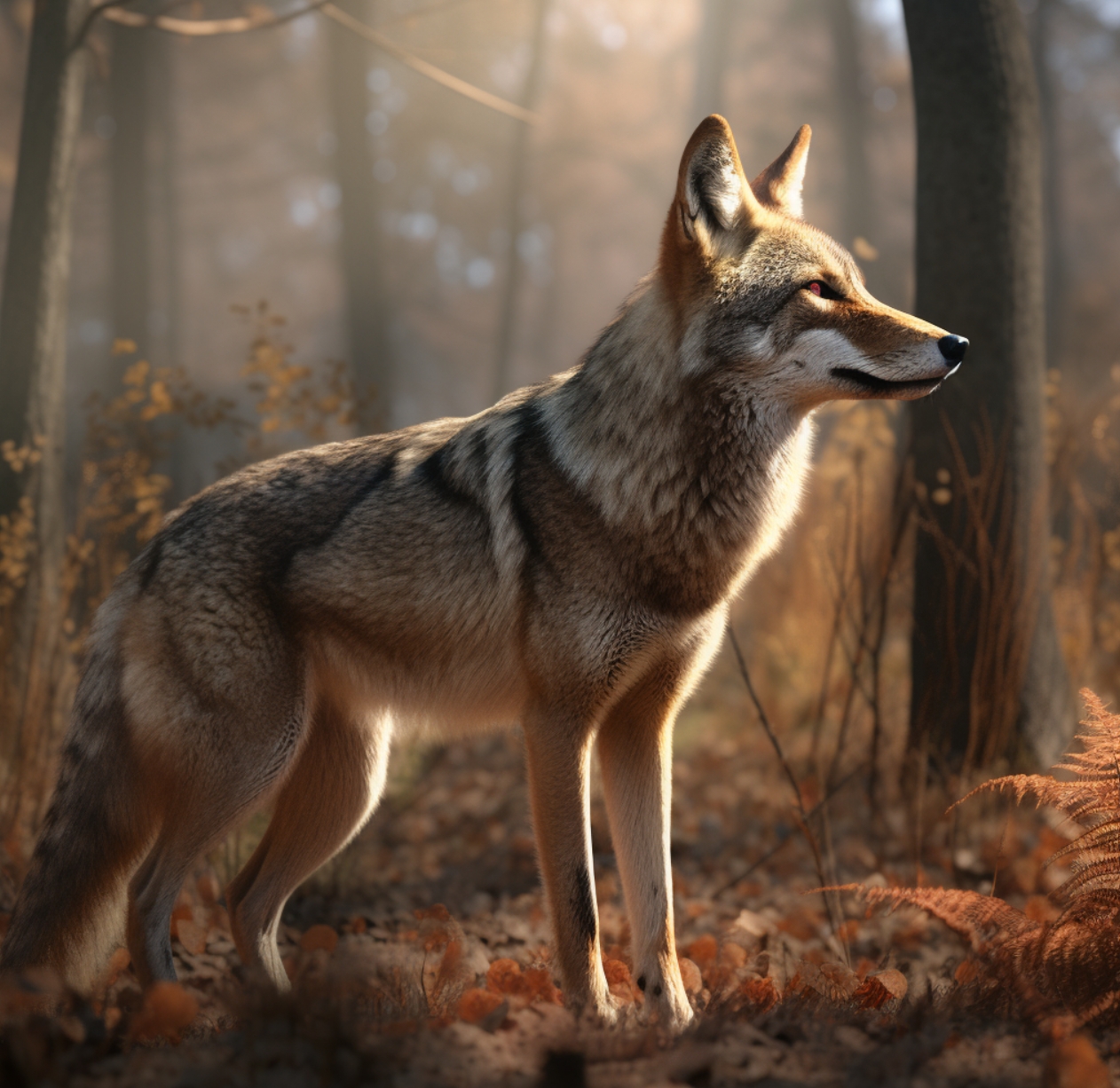As you step outside in the evening, you might hear the eerie howl of a coyote in the distance. These cunning creatures are a common sight across North America, and many people have questions about their habits and behavior. One of the most frequently asked questions is: when are coyotes most active?
The Twilight World of Coyotes
Contents
Coyotes are primarily crepuscular creatures, meaning they’re most active during dawn and dusk hours. These twilight periods offer them the perfect balance of visibility and concealment, allowing them to hunt and navigate their environment with ease.
Nighttime Activity
Although coyotes are often spotted during dawn and dusk, they can also be active during the night. This is particularly true in areas with heavy human activity, as coyotes have learned to adapt to our presence. In fact, some coyotes have even become nocturnal in urban areas, shifting their activity to nighttime to avoid human encounters.
Coyote Behavior Throughout the Seasons
Coyote activity levels can vary depending on the time of year. Let’s take a look at how their behavior changes with the seasons:
Spring and Summer
During the warmer months, coyotes are busy raising their pups and searching for food. This is when they are most likely to be spotted during daylight hours. In spring, coyotes often hunt in pairs or small family groups to provide for their growing offspring. As summer progresses, the young coyotes begin to accompany their parents on hunts, increasing the chances of daytime sightings.
Fall and Winter
As temperatures drop, coyotes become more active during the day. With less foliage to provide cover, they need to take advantage of the daylight to hunt effectively. However, they will still be most active during dawn and dusk hours, as their crepuscular nature dictates.
During the winter months, coyotes do not hibernate. Instead, they adapt to the colder weather and continue to search for food. This can sometimes lead to increased conflict with humans, as coyotes venture closer to residential areas in search of prey.
Coyote Activity in Urban Environments
As mentioned earlier, coyotes have become increasingly adaptable to living in urban environments. In these areas, they may alter their activity patterns to avoid humans and other potential threats. For example, they may become more nocturnal or increase their daytime activity to take advantage of food resources like garbage and pet food left outside.
Living Alongside Coyotes
If you live in an area with a coyote population, it’s essential to take steps to protect yourself, your family, and your pets. Some steps you can take include:
- Building a coyote-proof fence around your property
- Ensuring your fence is high enough to prevent coyote jumps
- Keeping pets indoors or in secure enclosures, especially during nighttime hours
- Removing potential food sources, like pet food or garbage, from your yard
Encounters with Coyotes: What to Expect
Coyotes are generally shy and elusive creatures, preferring to avoid humans whenever possible. However, in some situations, encounters may occur. Here’s what to expect and how to handle a coyote encounter:
Observing Coyotes from a Distance
If you spot a coyote from afar, appreciate the chance to observe these beautiful animals in their natural habitat. Keep your distance and avoid approaching the coyote, as this can cause them to feel threatened and potentially become aggressive.
Close Encounters
In the rare event that a coyote approaches you, it’s essential to know how to react. Here are some tips for handling a close encounter with a coyote:
- Stand tall and maintain eye contact with the coyote
- Make yourself appear larger by raising your arms and waving them slowly
- Shout or make loud noises to scare the coyote away
- If the coyote doesn’t leave, throw objects like rocks or sticks in its direction (but not at it) to encourage it to retreat
- Back away slowly, without turning your back on the coyote
It’s important to remember that coyote attacks on humans are extremely rare. However, taking these precautions can help ensure your safety and the safety of the coyote.
The Social Life of Coyotes
Coyotes are known for their complex social structures and behaviors. While some coyotes live solitary lives, others live in family groups or even form hunting packs. These packs can range in size, and their composition may change depending on factors like food availability and breeding season.
Communication
Coyotes are vocal animals, using a variety of sounds to communicate with each other. Their iconic howls can be heard over long distances, and they serve several purposes, such as:
- Announcing territorial boundaries
- Locating other pack members
- Warning other coyotes of potential threats
In addition to howls, coyotes also produce other vocalizations like yips, barks, and screams. Each of these sounds has a unique meaning and serves a specific purpose within the coyote’s complex communication system.
How to Coexist with Coyotes
Living alongside coyotes can be a rewarding experience, as long as we learn to coexist with them peacefully. Here are some tips for fostering a harmonious relationship with these fascinating creatures:
- Educate yourself and others about coyote behavior and ecology
- Take steps to protect your property and pets, such as building a coyote-proof fence or installing motion-activated lights
- Learn how to get rid of coyotes on your property using humane and effective methods
- Support local conservation efforts to preserve coyote habitats and ensure their survival in the wild
In Conclusion
Understanding when coyotes are most active and how their behavior changes throughout the year can help us coexist with these captivating animals. By learning about their habits, taking steps to protect ourselves and our pets, and appreciating the role they play in our ecosystems, we can foster a harmonious relationship with these fascinating creatures.
FAQ about When Are Coyotes Most Active
Q1: Are coyotes more active during the day or night?
Coyotes are primarily crepuscular animals, meaning they are most active during dawn and dusk hours. However, in areas with heavy human activity or in urban environments, coyotes may adapt and become more nocturnal or even increase their daytime activity to avoid human encounters.
Q2: Are coyotes more active during certain seasons?
Coyote activity levels can vary depending on the time of year. During the warmer months of spring and summer, they are busy raising their pups and searching for food. As a result, they are more likely to be spotted during daylight hours. In fall and winter, coyotes may become more active during the day due to less foliage for cover and the need to find food in colder temperatures.
Q3: Do coyotes hibernate in the winter?
No, coyotes do not hibernate in the winter. They remain active throughout the colder months, adapting to the conditions and continuing to search for food. This can sometimes lead to increased conflict with humans, as coyotes venture closer to residential areas in search of prey.
Q4: How can I protect my property and pets from coyotes?
To protect your property and pets from coyotes, consider taking the following steps:
- Build a coyote-proof fence around your property
- Ensure your fence is high enough to prevent coyote jumps
- Keep pets indoors or in secure enclosures, especially during nighttime hours
- Remove potential food sources, like pet food or garbage, from your yard
Q5: What should I do if I encounter a coyote?
If you encounter a coyote, maintain your distance and avoid approaching the animal. If a coyote comes too close, stand tall, make yourself appear larger, maintain eye contact, and make loud noises to scare it away. Back away slowly without turning your back on the coyote.
Q6: Are coyote attacks on humans common?
Coyote attacks on humans are extremely rare. However, it’s essential to take precautions and know how to react in the unlikely event of a close encounter with a coyote to ensure your safety and the safety of the animal.





